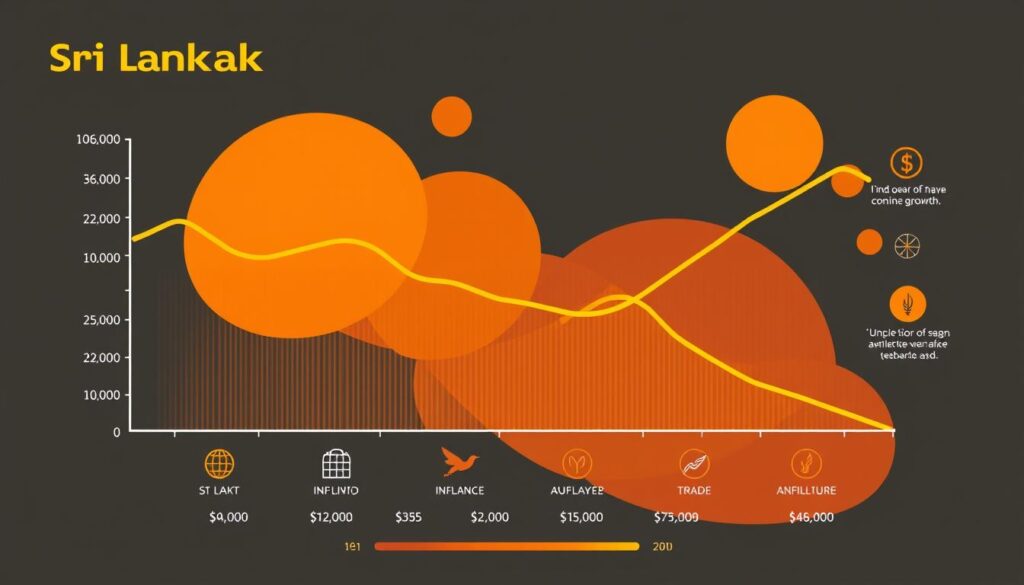Sri Lanka Parliament Cuts Presidential Powers in Reform
In a big change for Sri Lanka, the Parliament approved the 21st amendment. This move cuts presidential powers. It marks a move towards more democracy in this South Asian country. This major change got support from all sides, showing the country wants change during a tough financial time. The goal is to change how the government works, fight corruption, and help the economy recover.
People had protested against the former President Gotabaya Rajapaksa. This led to his stepping down. It showed people want a government that is open and careful with money. These new changes promise to limit the president’s control. They also aim to make the parliament stronger. These are important steps for political steadiness and fixing the economic problems.
Key Takeaways
- 179 lawmakers voted for the 21st Amendment, putting limits on the Sri Lankan president’s power.
- The amendment starts a new way of governing. A constitutional council will now guide presidential choices.
- With these changes, President Ranil Wickremesinghe’s role comes after Gotabaya Rajapaksa was removed.
- The 21st Amendment aims for a government that is open, skilled, and responsible. It focuses on getting the economy back on track.
- Putting a limit on cabinet ministries will make the government run smoother and more effectively.
- A stronger role for the parliament shows a shift towards a democracy with more control over the executive branch.
- Important constitutional bodies and councils will enhance expertise, openness, and responsibility in how Sri Lanka is governed.
Sri Lanka’s Parliament Approves 21st Amendment to Curb Presidential Powers
The Sri Lankan Parliament has recently made a big move. They ratified the 21st Amendment to change how their country is governed. This is big news in Sri Lanka, because it aims to take away some of the president’s power. The goal is to make the country’s leadership more democratic.
Rationale Behind the Constitutional Change
Sri Lanka is facing tough economic problems. This situation led to the push for the 21st Amendment. The last amendment gave the president too much power. Now, with this change, they want to make things fairer. They aim to boost the role of Parliament and other independent groups.
The Opposition and Civil Society’s Stance
Not everyone is happy with the new amendment. Some people and groups think it doesn’t do enough to reduce the president’s power. They say it’s a good start. But, the president still has too much control over important areas. This might slow down true democratic reform and the fight against corruption, they believe.
Impact on Governance and Anti-Corruption Safeguards
This amendment is seen as a key step for fighting corruption and improving leadership in Sri Lanka. It aims to make governance more transparent and responsible. It’s also vital for Sri Lanka to get international help, like the support from the IMF. This is needed for the country to recover economically.
Also, according to news on Sri Lankan politics, this change could really shake things up. It pushes the country towards being more democratic. Everyone is watching to see how these reforms turn out, both in Sri Lanka and around the world.
Understanding the Implications of Parliament Amendment Sri Lanka
The recent constitutional amendment in Sri Lanka, known as the 21st Amendment, has made big news. It changes the political landscape a lot. Aimed at reducing the Executive President’s powers and boosting parliamentary authority, it got a large majority in Parliament. This moment is key for Sri Lanka’s politics. The amendment is about balancing government powers and answering calls for better governance.
The 21st Amendment saw great agreement in Parliament, going beyond party lines. To pass, it needed a two-thirds vote from the 225-member house. It got 179 votes in favor. This shows a rare unity in the legislature during a time when people strongly wanted change. It’s a major step in Sri Lanka’s constitutional change.
| Event | Votes in Favor | Votes Against | Abstentions | Outcome |
|---|---|---|---|---|
| Initial Vote | 179 | 1 (Sarath Weerasekara) | 45 | Passed with a two-thirds majority |
| Second Reading Vote | 179 | 1 | 0 | Amendment Approved |
| Third Reading Vote | 174 | 0 | 1 | Amendment Enacted |
The 21st Amendment has an important feature. It stops people with dual citizenship from running in elections. This is to ensure leaders are fully loyal to the nation. From 1994 to 2015, every presidential candidate promised to end the Executive Presidency. This shows a strong wish for reform. The 21st Amendment follows these efforts, starting with the 19th Amendment in 2015, which also aimed to reduce presidential powers.
Looking at Sri Lanka’s current affairs, there’s a consistent effort to change the constitution. The 21st Amendment’s drafting suggested many reforms. These aimed to spread out executive powers which often got misused. The amendments are part of a push for democratic reform. They aim to strengthen legislative structures and encourage fair governance.
In conclusion, passing the 21st Amendment is a milestone in Sri Lanka’s constitutional changes. It shows major progress towards fair and democratic governance. This legislative change marks a pivotal moment in Sri Lanka’s politics. It might lead to more reforms, moving towards more democratic transparency and accountability.
Sri Lanka Governance Amendment: A Step Toward Democracy?
The Sri Lanka Governance Amendment, also known as the 21st Amendment, marks a key moment for the country. It aims to change the political scene by repealing the 20th Amendment. This gave a lot of power to President Gotabaya Rajapaksa. Now, the focus is on reducing the president’s power and strengthening democracy.
This comes as the country faces economic and political challenges. People are calling for clearer governance and better checks and balances. By bringing back parts of the 19th Amendment, Prime Minister Ranil Wickremesinghe seeks to lessen executive power. However, some worry this doesn’t go far enough in shifting power to promote Democracy Sri Lanka.
The 21st Amendment has been approved by the cabinet to give more power to Parliament and adjust presidential powers. Critics say it doesn’t do enough to limit the President’s power. They argue it lacks strong checks and balances, unlike earlier amendments aimed at reducing government control. Still, this update in Sri Lanka Politics might spark further changes toward a democratic system.





